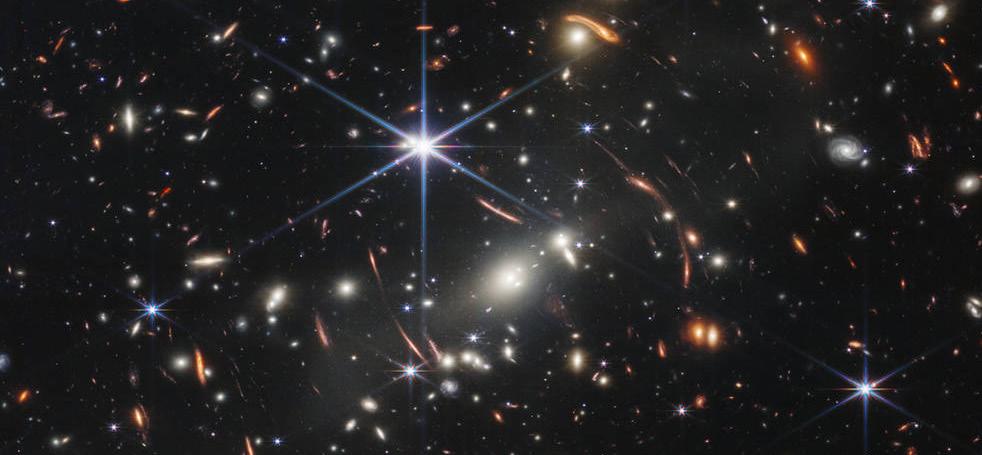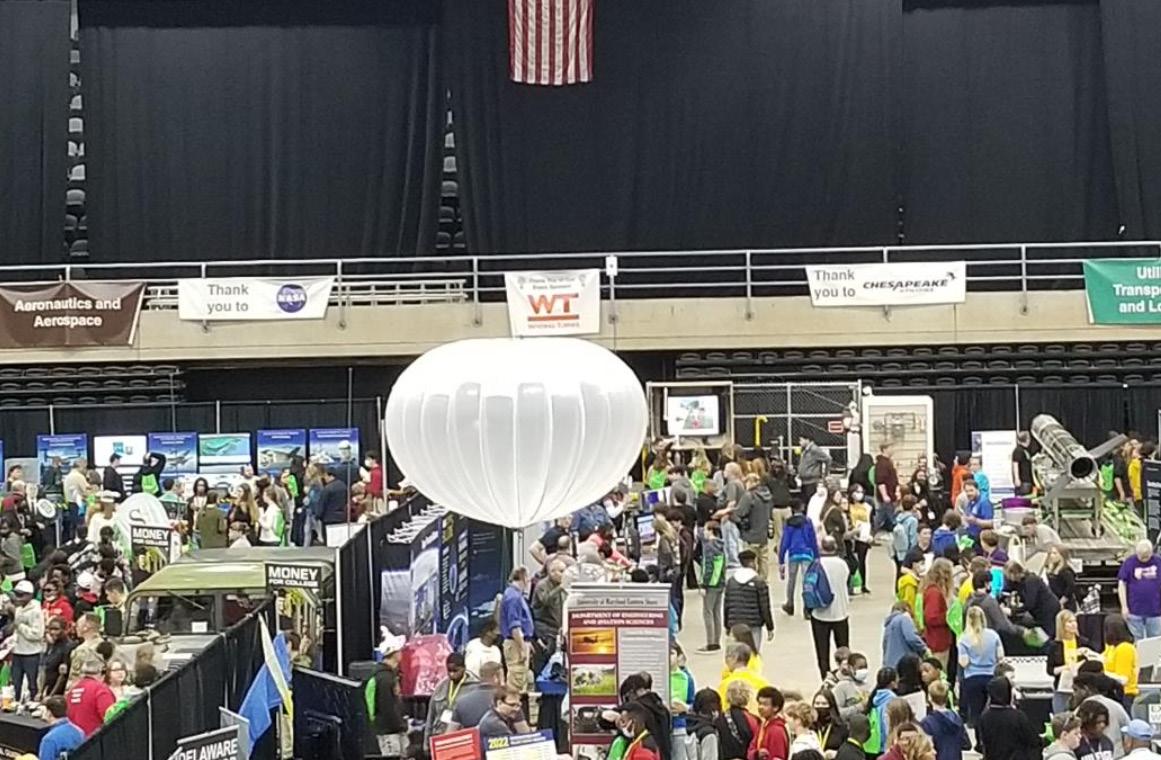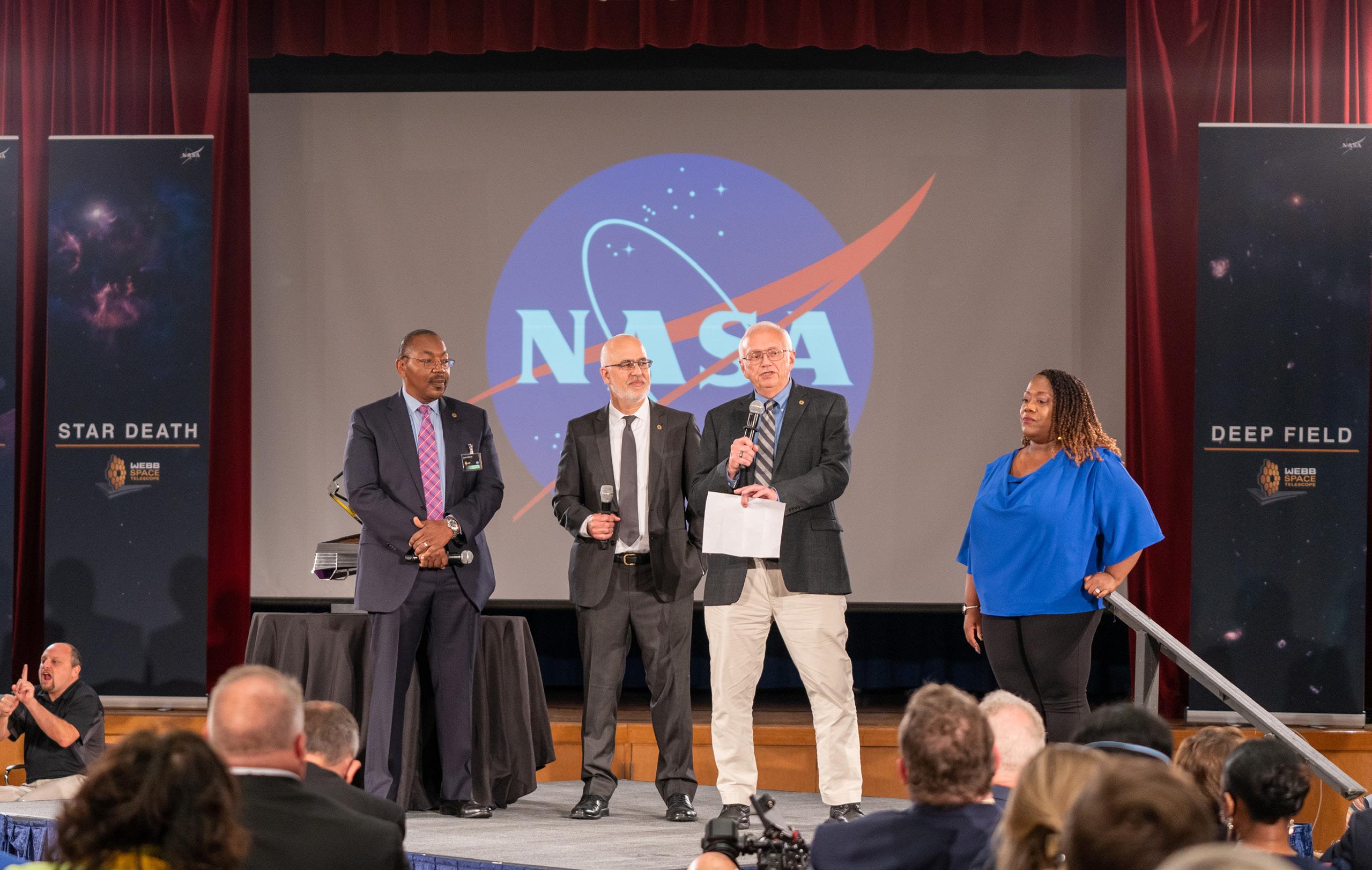2 minute read
THE SPACE OBSERVATORY OF THE NEXT DECADE
WEBB
JAMES WEBB SPACE TELESCOPE BEGINS SCIENCE OPERATIONS
In 1996, NASA set off to build a successor to the Hubble Space Telescope that would peer into the far reaches of the universe in the infrared part of the spectrum. Engineers came up with a design that included an optical telescope element composed of 18 mirror segments, an integrated science instrument module containing four main science instruments, a spacecraft bus that provides support functions for the telescope’s operations, and a sunshield that insulates the telescope’s sensitive optics and science instruments from the heat of the Sun, Earth, and Moon.
After much anticipation, Webb launched from the European Space Agency’s Spaceport in Kourou, French Guiana, aboard an Ariane 5 rocket on Dec. 25, 2021, setting off on a monthslong Goddardled commissioning process that readied the telescope for science observations.
NASA’s Goddard Space Flight Center provides overall mission management, and the Space Telescope Science Institute in Baltimore performs flight and science operations.
Webb is currently in a stable orbit a million miles away from Earth, working to fulfill its science mission: to observe the formation of the first stars and galaxies, to help discover how galaxies have assembled and evolved over billions of years, to peer into cosmic nurseries to witness the formation of stars and planetary systems, and to analyze the atmospheres of exoplanets and potentially identify the building blocks of life.


The NASA community was joined by agency leadership, members of Congress, and others in the science community for a live NASA Television broadcast – primarily taking place on Goddard’s campus in Greenbelt, Maryland – on July 12, 2022, that revealed the first five images from the telescope, garnering attention from media outlets worldwide. The day prior, the White House released a preview of the first image – known as Webb’s First Deep Field – which features thousands of galaxies that represent a patch of the night sky that is approximately the size of a grain of sand held at arm’s length by someone on the ground.
Dr. John Mather is Webb’s senior project scientist. He was the corecipient of the 2006 Nobel prize in physics for his work on the Cosmic Background Explorer, which helped validate the bigbang theory. Webb is the scientific complement to NASA’s Hubble Space Telescope, expected to be the premier space observatory over the next decade. Webb is an international project led by NASA with its partners, the European Space Agency and Canadian Space Agency.
NASA Headquarters in Washington oversees the Webb telescope mission. Goddard manages Webb for the agency and oversees work on the mission performed by the Space Telescope Science Institute, Northrop Grumman, Ball Aerospace, L3Harris Technologies, and other mission partners. In addition to Goddard, several NASA centers contributed to the project, including the agency’s Johnson Space Center in Houston, Jet Propulsion Laboratory in California, Marshall Space Flight Center in Alabama, Ames Research Center in California, and others.
For more information about the James Webb Space Telescope, visit www.jwst.nasa.gov.















